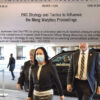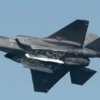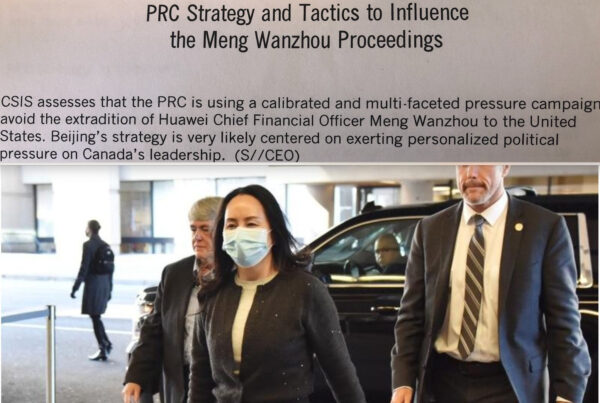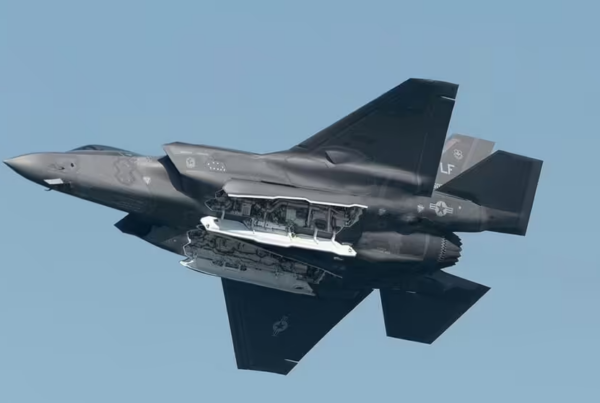When the ‘Arab Spring’ erupted five years ago, observers of the Arab world asked themselves mostly what kind of state governments will emerge from the popular revolts and anti-regime uprisings sweeping large parts of the Middle East and North Africa?
Some, like the late Fuad Ajami, read the unrest as the birth pangs of a region-wide struggle towards modernity. A long-silenced Arab world was finally clamoring to be heard, eager to find its place in the modern, possibly even democratic, order of nations.[1] Others, like Khaled Abu Toameh, were less sanguine. Looking at the balance of power between liberals and Islamists in key Arab states, they warned that the ‘Arab Spring’ was the mother of all misnomers, and that a harsh ‘Islamist Winter’ was coming.[2] Viewed through their prism, the electoral victories of the AKP in Turkey in 2002 and the Palestinian Hamas in Gaza in 2006 were the early precursors to a tsunami of Muslim Brotherhood wins in Tunisia, Egypt, and beyond. Those “old” Arab autocrats – statist, socialist, secular, and sclerotic – who would prove unable to effectively co-opt or suppress the Islamists, would face wholesale replacement at the hands of a new breed of assertive Islamist dictatorships.
Once the Islamists actually came to power in Tunisia (2011) and Egypt (2012), the question “what kind of state governments will emerge in the Middle East?” morphed and acquired new meanings. Would the Islamists seek to monopolize their grip on state, society and the markets, or will they tolerate spheres of autonomy for the old guard and other opposition groups? Will the Muslim Brotherhood movements of Tunisia and Egypt follow the Turkish model of incremental, largely non-violent Islamization of society and (at least for the time being) preservation of democracy, or would they quickly turn towards the more coercive methods of forced Islamization favoured in Iran and Gaza? Did the fact that only Arab “republics”, not monarchies, collapse in the regional earthquake, point to some genuine monarchical stability-advantage – and therefore portend well for regime durability in Bahrain, Jordan, Kuwait, Morocco, and Saudi Arabia – or is this a statistical fluke that is bound to be corrected sooner or later? And in the international sphere, would the untested new Islamist leaders (most importantly Egypt’s Mohamed Morsi) accept the existing rules of the game – honouring previous agreements with the United States and Israel – or veer towards some truculent new “Islamist foreign policy” whose features were not yet defined?
Now five years have passed, the question “what kind of state governments will emerge in the Middle East?” appears almost quaint. Tunisia’s courageous but still fragile democratic experiment notwithstanding, it has become clear that the most urgent, deep and transformative processes shaping the region stem from the question: “how much, (or rather, how little) state government is emerging in the Middle East?”
As the Paris attack of November 13 starkly shows, the question is far from an academic one. The Islamic State emerged under conditions of state collapse in Iraq and Syria, and continues to acquire territory, recruits, money, and military capabilities in the face of political vacuums across large swaths of the Middle East and North Africa.
The Arab world was never a paragon of good governance. The key elements of the liberal international order – the spread of democracy, economic freedom and interdependence, and the construction of a thick web of international institutions – never took root in North Africa nor the Middle East, so that the region failed to acquire the deep foundations of peace, freedom, and prosperity achieved in other parts of the world.
For almost a century however – from the rise of Arab nationalism and the formation of sovereign-states in the region following the Allied victory in World War I and the end of the colonial era – the Middle East and North Africa were part and parcel of the modern interstate system. Arab elites managed to forge political organizations that generally exercised a monopoly on the legitimate use of physical force within their respective territories, controlled their borders, commanded the basic loyalty of their populations, and provided those populations with at least a modicum of essential public goods. Accordingly, strategic analysis of the Middle East could legitimately focus on relations between states in the region, security arrangements were based on internationally accepted conventions, alliances and deterrence, and diplomatic efforts mainly sought to maintain stability and negotiate peace between contending states. Though never Wilsonian, the Middle East was broadly Westphalian.
This is no longer the case. The most powerful forces shaping the region today are centrifugal, eroding and, in extremis, obliterating the ability of state authorities to maintain a monopoly over the means of violence and enforce rules within their territories. They undermine states’ attempts to answer their rapidly growing populations’ expectations of decent living standards and command their basic loyalty, to prevent external actors from infiltrating their borders, or to cooperate effectively with other states and international organizations to manage cross-border challenges, including terrorism, illicit trade, environmental degradation, and refugee flows.
International public attention has understandably focused on the most dramatic examples of state collapse in the region – Iraq, Libya, Somalia, Syria, Yemen, and to a lesser extent the Sinai Peninsula and those parts of the vast Sahel region – in Cameroon, Chad, Mali, and northeastern Nigeria – that have been most visibly brutalized by the Salafi-jihadist militant groups Al-Qaeda in the Islamic Maghreb (AQIM) and Boko Haram. Yet the crisis of governance afflicting the Middle East and North Africa is both broader and deeper than the sad litany of failed states already strewn across the region.
For one, chaos in a given state – particularly strategically positioned ones, such as Syria in the Levant and Libya in the Maghreb – invariably produces negative security, economic, and humanitarian spillovers that risk infecting neighboring countries. Order in the Hashemite Kingdom of Jordan (a rather delicate thing at the best of times) is threatened by successive waves of refugees from the Iraqi and Syrian conflicts, while Tunisia’s fragile economic and political recovery is endangered by the ease with which ISIS terrorists can cross the porous Libyan border. Looked at more systematically, we know that a country whose immediate neighbour is experiencing a civil war is 50 percent more likely to succumb to internal conflict itself, and that state failure is typically a regional phenomenon in that it predominantly occurs in clusters of geographically contiguous or proximate states.[3]
The crisis of governance in the Middle East is also larger than the sum of its existing parts for broader, structural reasons that are more diffuse, but no less important. In 2015 the Arab world is home to some 370 million people, compared to 150 million in 1980. Over 60 percent of this population is under the age of 25, with a median age of just 22.[4] Youth unemployment – a key indicator of social and political instability – is rife and getting worse. In Egypt, for example, youth male unemployment is now near 40 percent, up from less than 20 percent in 2000, and female youth unemployment has reached a staggering 72 percent, up from 45 percent in 2000.[5] Despite oil wealth, GDP per capita in Arab countries grew by a paltry 6.4 percent over the entire period from 1980 to 2004 (less than 0.5 percent annually) and the region has experienced declines in GDP per capita for all the years since the outbreak of the ‘Arab Spring’, with the exception of 2012 when it grew by less than 2 percent. Oil, corruption, and protectionism have crowded out manufacturing and services, so that Arab countries were less industrialized in 2007 than they were in 1970. Water scarcity and desertification are placing additional burdens on already overstretched land, fueling conflict over natural resources, population displacement, and increased drug, weapons, and human trafficking.[6]
Already in 2009, the United Nations Arab Human Development Report warned that the growing inability of many Arab countries to fulfill essential state functions was emaciating their legitimacy, and driving substantial segments of their populations to abandon loyalty to the state and seek protection, identity, and opportunity in competing sources of authority – religious, sectarian, tribal, extremist, or criminal.[7] Six years later, governance conditions in the region have deteriorated further. Not only are six out of the twelve worst failed states in the world now located in North Africa and the Middle East, but according to the latest available World Bank figures, government effectiveness, control of corruption, and rule of law conditions have all declined in the region since 2010, placing North Africa and the Middle East, for the first time, below sub-Saharan Africa and at the bottom of the world’s regional rankings of key governance indicators.[8]
Lastly, the crisis of governance in the region is exacerbated by the singular lack of alternative, stability-enhancing institutions in the Middle East that might have stepped in to assist fraying Arab states. There is no Arab equivalent of the European Union (EU), or even the weaker Organization of American States (OAS), that might render collective assistance. There is no Arab NATO that could provide indigenous stabilization forces or regional coordination mechanisms. And in the aftermath of the American debacles in Afghanistan and Iraq, no Western actor, or coalition, is likely to step in with sufficient resources and resolve to help contain and begin to reverse the spreading chaos. The age of large-scale, Western-led counter-insurgency and state-building campaigns is over, at least for the foreseeable future.
The net effect of this crisis of governance is the gradual, messy emergence of a new kind of political order. Like nature itself, political systems abhor a vacuum. Where state authority recedes, and no stability-enhancing alternative governors are in place to hold the old system together, new challengers emerge to contest power and forge new realities based on their particular interests and visions of the world.
Some of these new contenders are simply resurgent religious or sectarian communities – Druz, Yezidi or Circassian for example – trying to make-do in an insecure environment, or to achieve conventional independent statehood, as in the Kurdish case. Others are little more than criminal gangs practicing opportunistic local Warlordism.
But states across the Middle East and North Africa are also increasingly losing power to a panoply of jihadist terrorist organizations that now govern millions of people, control large territories, and strive to replace the Westphalian order – which they view as political apostasy – with Sharia-based Islamic Caliphates.[9]
Islamist Non-State Armed Governors (INSAG’s) – which can be defined as armed organizations, not under state control, that practice violent jihad, administer territories and provide services to local populations – are not a product of the ‘Arab Spring’ per se. Since the 1980s, jihadist groups – such as Jamaat al-Da’wa and the Taliban Islamic Emirate, both in Afghanistan – have sought to govern territories that came under their control; often proclaiming the establishment of localized emirates that would eventually be subordinate to a world-wide Caliphate.[10]
At the same time, the Iranian-backed Shi’a militia, Hezbollah – or “Party of God” – has, since its establishment at the height of the Lebanon civil war in the early 1980s, served as a model of a jihadist terrorist organization that gradually acquires powerful economic, social-welfare, and political arms. Indeed, despite its Shi’a credentials, Hezbollah’s organizational structure, Da’wa (social welfare) activities, fund raising techniques, media operations, as well as suicide bombings and paramilitary tactics, have all greatly influenced the development of Sunni INSAG’s such as the Palestinian Hamas – or “Islamic Resistance Movement” – Palestinian Islamic Jihad (PIJ) and, more recently, Salafist jihadist groups, notably the Islamic State in Iraq, Syria, and Libya; Jabhat al-Nusra in Syria; and Ansar Bait al-Maqdis in Sinai.
Still, the crisis of governance in the Middle East and North Africa is accelerating the formation and development of INSAG’s in three main ways which, together, are fundamentally transforming the nature of terrorist organizations in the region.
First, diminished state authority in the Middle East and North Africa means an unprecedented proliferation of terrorist safe havens – areas where INSAGs can organize, plan, raise funds, communicate, recruit, train, and operate in relative security. The change is both quantitative (more actual and potential safe-havens) and qualitative; as states lose capacity and legitimacy their ability to effectively detect, suppress or co-opt INSAGs diminishes, while the ability of INSAG’s to recruit, gain control of resources, and operate with impunity grows. This in turns feeds a vicious cycle where the state may well find itself having to dedicate more and more of its dwindling authority on containing and countering resurgent non-state challengers.
Second, the enormous new opportunities presented to INSAG’s to gain territory, control people, and contest governance, is driving rapid evolution in the self-perception, ambitions, and spheres of activity of these organizations.[11] In the 1970s and 80s terrorist groups in the Middle East (as in Europe and Latin America) were almost invariably small and clandestine. Typically numbering several dozen activists at most and aware that state authorities, domestic and foreign, were constantly on their tails, organizations like the Palestine Liberation Organization (PLO) or Black September controlled few resources and dedicated what resources they had to sheer institutional survival and the execution of attacks.
In contrast, INSAGs such as Hezbollah, Hamas, Jabhat al-Nusra, and ISIS today possess tens of thousands of members each, control energy and other assets worth tens of billions of dollars, embed themselves and recruit openly among the people, and have to dedicate a much smaller fraction of their resources, if at all, to evading state authorities. In fact, the current openings generates powerful incentives for “old style” terrorist organizations to evolve ideologically and organizationally into hybrid terrorist organizations that extend their power by becoming entrenched political, economic, social, educational and media actors.
This, in a nutshell, is the difference between the al-Qaeda of Osama bin-Laden a decade ago and the Islamic State of Abu Bakkr al-Baghdadi today. Whereas in the minds of bin Laden and his successor, Ayman al-Zawahiri, building a Caliphate involved the gradual awakening of the Ummah (Community of the Faithful) to a long-term utopian project, in the post-‘Arab Spring’ chaos of Syria, Iraq, and Libya, al-Baghdadi was able to leap frog the process and practice the motto – “If you build it, they will come”.[12]
That INSAG’s are able to attract unprecedented quantities of fighters, arms, and money, is in large part due to a third main outcome of diminished state authority in many Middle Eastern and African countries. Effective sovereignty requires not merely the ability of the state to maintain control of its territory and population, but equally to prevent unwanted external intervention in ones realm. Two current phenomena demonstrate the weakening of this central feature of modern statehood for Middle Eastern countries, and the empowerment of INSAGs at their expense. The first is the foreign fighter (or jihadi tourism) phenomenon. In 2015 it is estimated that over 20,000 foreign fighters from more than fifty countries around the world entered the territories of Iraq and Syria, almost all of them to join this or that non-state fighting faction.[13] The ease with which these fighters enter (and leave) porous borders in Iraq, Syria, Libya, Yemen, Sinai and elsewhere, perpetuates civil wars in the region, furthers the disintegration of states in the region, and supplies INSAGs with foreign capacities they would otherwise lack.
At the same time, Iran and Russia are now able to sponsor INSAGs and build proxy forces through them to advance their strategic interests in the region. Certainly, Iran has been the primary beneficiary of the Syrian civil war and the disintegration of Iraq and Yemen. The hegemon-by-proxy in Lebanon for decades, Iran is now methodically enlarging and deepening its influence across the region by simultaneously agitating Shi’a-Sunni conflict, portraying itself as protector and benefactor of the Shi’a populations in Bahrain, Iraq, Lebanon, Syria and Yemen, and ruthlessly exploiting power vacuums wherever it finds them. In the face of the Assad regime’s total dependence on Iran and Hezbollah, Iranian Revolutionary Guards and Hezbollah forces are now actively pursuing the establishment of missile bases within Syrian territory with which to strike Israel, while minimizing the risk of an all-out Israeli retaliation against Hezbollah in Lebanon. When Israel and Hezbollah next go to war – and it is a question of when rather than if – the battlefront will likely extend to Lebanon, the Golan, and Syria, and will almost certainly involve Iranian soldiers as well as Hezbollah militiamen.
Five years since the launch of the ‘Arab Spring’, between five and seven million people live under the yoke of the Islamic State in parts of Iraq, Syria and Libya, a further two million under the rule of Hamas and Palestinian Islamic Jihad (PIJ) in Gaza, and a total of at least another million are under INSAG control in Lebanon, Sinai, and parts of the Sahel region – all in all between eight and ten million human beings, in what is already the world’s least politically stable but most rapidly populating region. Whatever the fate of one INSAG or another may be, as a phenomenon they are here to stay. Should they continue their territorial gains and entrenchment among the local populations, they will inculcate millions of children in various forms of militant jihadism, gradually acquire more state-like military and financial assets, and increasingly transform the nature of international terrorism and challenge the state-based international order itself.








